
1
Welcome to Naragebup
Rockingham Regional Environment Centre.
| 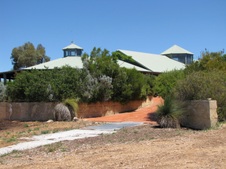
2
Entrance to Naragebup
Founded in 1996, Naragebup was the first purpose-built environment centre in Western Australia. A not-for-profit organisation run by the community, for the community, Naragebup’s mission is ‘To provide constructive, integrated and educational programmes which promote the benefits of managing the environment to sustain quality of life.’
| 
3
Organic Gardens
Sustainable methods of permaculture, organic gardening, worm farms, composting and water-saving methods are demonstrated.
|

4
Garden by Green Corps
| 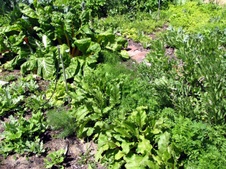
5
Healthy Vegetable Patch
Beetroot, Carrots, Silver Beet, Broad Beans, etc.
| 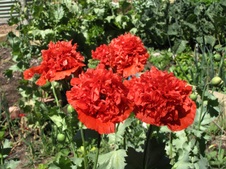
6
Bright Red Poppies add colour
|

7
Organic Vegetable Patch
Onions, Beetroot, Sweet Corn, Lettuce to name a few..
| 
8
Chickens
The "Chicken Tractors" eat the leftover crop, turn over the soil, eat any pests, and fertilise the soil. With supplementary feeding the chickens provide healthy free-range tasty organic eggs.
| 
9
Red Hen comes to say Hello
|
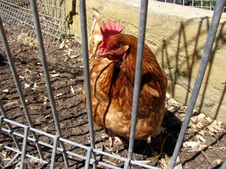
10
Red Hen behind Bars
| 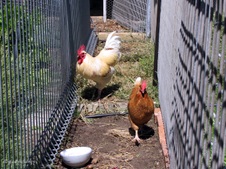
11
Hen and Rooster coming down the run
| 
12
Majestic Rooster
|
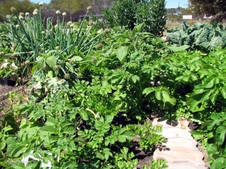
13
Mixed Garden Bed
Onions, Sunflowers, Potatoes, Celery, etc..
| 
14
Colourful Red Poppy
| 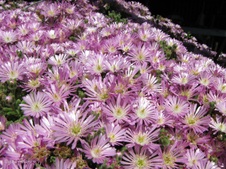
15
Mesembryanthemum Display
Low-water garden.
|

16
Large Delicious Mulberries!
Growing in permaculture swales.
| 
17
Big Black Juicy Mulberry!
| 
18
Poppy Bud bursting open
|
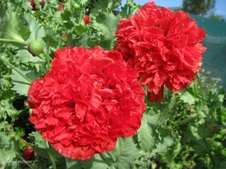
19
Twin Poppies
| 
20
Turn Left for Bush Tucker Walk
| 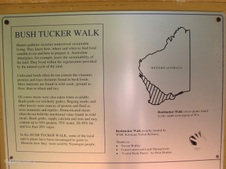
21
Bush Tucker Walk
In this Bush Tucker Walk, some of the local native plants have been encouraged to grow to illustrate how they were used by Nyoongar people.
|
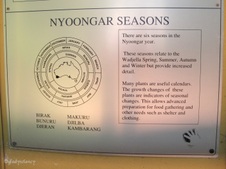
22
Nyoongar Seasons
There are six seasons in the Nyoongar year.
| 
23
Mia Mia is a Nyoongar Shelter
| 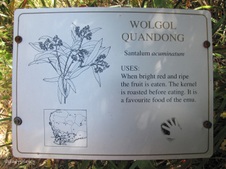
24
Quandong (Santalum acuminatum)
Nyoongar name is Wolgol. Uses: When bright red and ripe the fruit is eaten. The kernel is roasted before eating. It is a favourite food of the emu.
|

25
Fallen Quandong Fruit
Bright red flesh can be eaten raw, or cooked in Quandong Pies or Quandong Jam.
| 
26
Lone Fruit on Quandong Tree
| 
27
Quandong Flesh and Kernel
The Kernel can be roated before eating.
|

28
Grasstree (Xanthorrhoea preissii)
Nyoongar name is Balga.
| 
29
Grasstree (Xanthorrhoea preissii)
Uses: The gum is a glue for making knives and other tools. The nectar from the flower sweetens cakes. The dead flower heads make a useful fire torch. Bardi grubs are found inside the trunk.
| 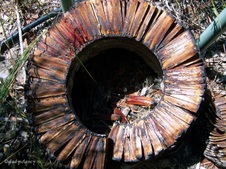
30
Cross-section of fallen Grasstree
When the grasstree dies, the trunk rots and eventually the core disintegrates, leaving a cylinder of leaf-bases. This 'shell' makes an excellent home for snakes and lizards.
|
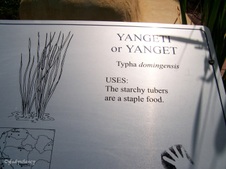
31
Bulrush (Typha domingensis)
Nyoongar name is Yangeti or Yanget.
| 
32
Bulrush (Typha domingensis)
Uses: The starchy tubers are a staple food.
| 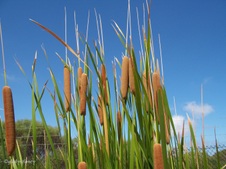
33
Bulrush (Typha domingensis)
|
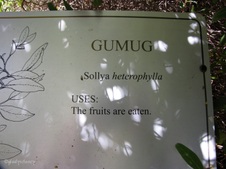
34
Australian Bluebell (Sollya heterophylla)
Nyoongar name is Gumug. Uses: The fruits are eaten.
| 
35
Australian Bluebell (Sollya heterophylla)
| 
36
Australian Bluebell (Sollya heterophylla)
An attractive climbing shrub – berries are eaten raw.
|

37
Zamia (Macrozamia riedlei)
Nyoongar name is Booyo or Jeeriji. Uses: The toxins are removed from the big orange fruit by leaching or other methods before cooking. After roasting in hot coals the kernel is also eaten.
| 
38
Zamia (Macrozamia riedlei)
Nyoongar name is Booyo or Jeeriji.
| 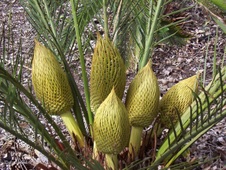
39
Zamia (Macrozamia riedlei)
Uses: The toxins are removed from the big orange fruit by leaching or other methods before cooking. After roasting in hot coals the kernel is also eaten.
|

40
West Australian Christmas Tree (Nuytsia floribunda)
Nyoongar name is Mudja. Uses: Young roots are peeled and eaten.
| 
41
West Australian Christmas Tree (Nuytsia floribunda)
This tree has deep spiritual significance in Nyoongar culture. After death, spirits return to the Dreaming.
| 
42
West Australian Christmas Tree (Nuytsia floribunda)
Leaves should not be taken into a home or camp as the spirit may become trapped.
|

43
Clematis linearifolia
| 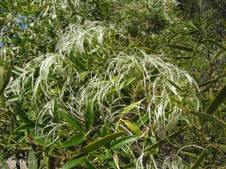
44
Clematis linearifolia
Uses: Tubers are eaten either roasted or pounded into a paste. Also used as a poultice to reduce skin irritations.
| 
45
Turn Right to Nature Trail
|

46
Boardwalk at start of Nature Trail
| 
47
Walking under the Dune Wattles
| 
48
View from Lookout
Surrounding natural vegetation.
|
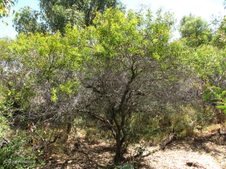
49
Acacia (Acacia rostellifera)
Summer-scented Wattle grows on coastal dunes.
| 
50
Nature Trail Boardwalk
| 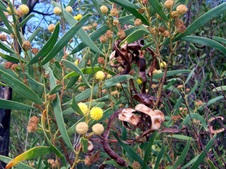
51
Cyclops Wattle (Acacia cyclops)
Coastal Wattle found on sand dunes and limestone.
|
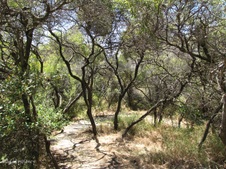
52
Dune Wattles
| 
53
Osprey nesting place
| 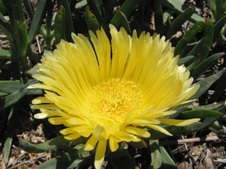
54
Coastal Pigface (Carpobrotus virescens)
Nyoongar name is Bain. Uses: Sweet, succulent fruits are eaten fresh or dried. Juice from leaves used to treat burns, scalds and stings.
|
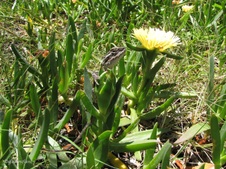
55
Western Bearded Dragon Lizard 1
Western Bearded Dragon (Pogona minor minima)inhabits coastal dunes and arid shrublands in the south-west of Western Australia.
| 
56
Western Bearded Dragon Lizard 2
I moved in a little closer.
| 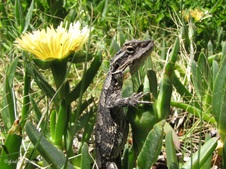
57
Western Bearded Dragon Lizard 3
Closer still and he did not move!
|

58
Rottnest Island Pine (Callitris preissii)
A small compact dark tree up to 10m high with dense rich green foliage that is pleasantly aromatic.
| 
59
Rottnest Island Pine (Callitris preissii)
| 
60
Welcome to the Butterfly House
|

61
Monarch Butterfly on Lantana Flower
| 
62
Monarch on Shadecloth above
| 
63
Monarch landing on Lantana
|
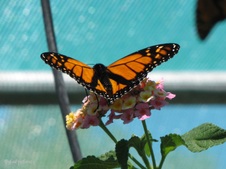
64
Brightly coloured Monarch
| 
65
Monarchs keep moving
| 
66
Monarch with Wings spread
|

67
Striped Caterpillar
| 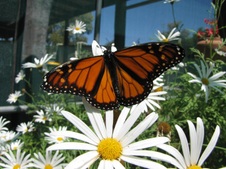
68
Monarch Butterfly on Daisy
| 
69
Fluttering Monarch
|

70
Monarch lands on Daisy
| 
71
Colourful Monarchs
| 
72
Monarch on the Feeding Table
|

73
Striped Caterpillar will soon be a Butterfly
| 
74
Velvety Striped Caterpillar
| 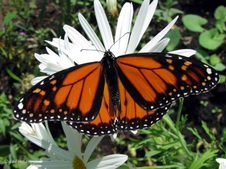
75
A Beautiful Butterfly
|

76
Western Bearded Dragon Lizard 4
Came out of the Butterfly House and it was still there!
| 
77
Western Bearded Dragon Lizard 5
| 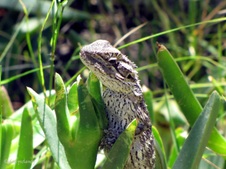
78
Western Bearded Dragon Lizard 6
|
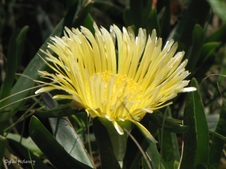
79
Coastal Pigface (Carpobrotus virescens)
| 
80
Garden Sculpture
| 
81
Long-necked Turtle
Marine aquariums and Turtle Rescue Centre where up to 70 baby sea turtles a year are rehabilitated.
|

82
Environmental Centre display
| 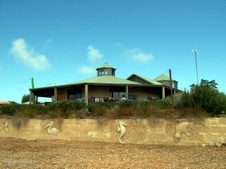
83
Innovative Enviro-tech Building
This building was constructed as a community project with state of the art technology, based on environmentally sound principles.
| 
84
View across to Lake Richmond
Lake Richmond is a perennial freshwater lake which is home to the critically endangered ecological community of Thrombolites.
|